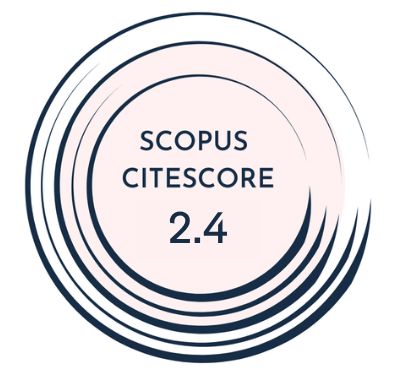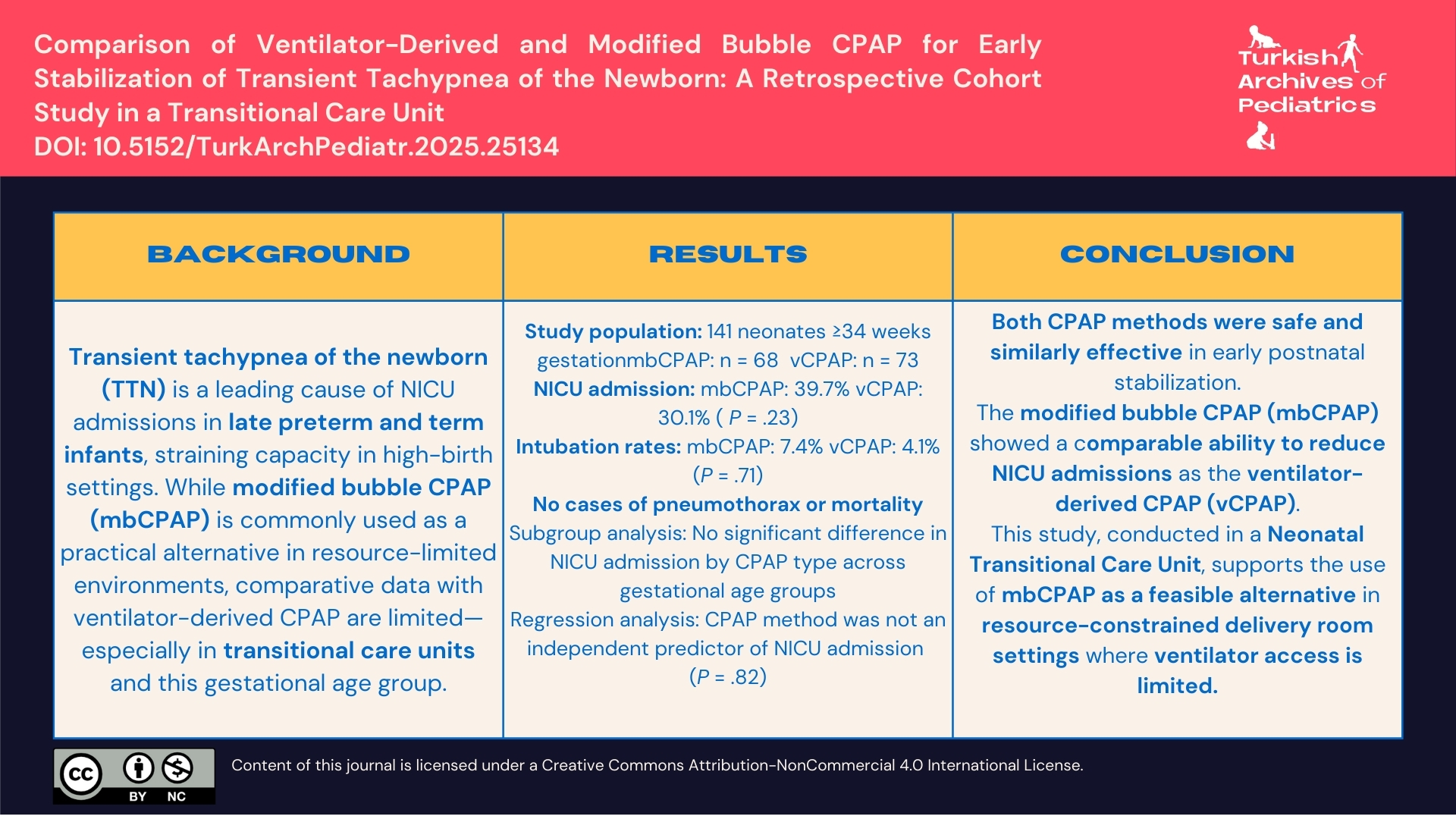Objective: To compare the clinical effectiveness of ventilator-derived continuous positive airway pressure (vCPAP) and modified bubble CPAP (mbCPAP) in the early management of respiratory distress among late preterm and term neonates in a neonatal transitional care unit (NTCU) setting.
Materials and Methods: This retrospective cohort study included infants born at ≥34 weeks’ gestation who developed respiratory distress shortly after birth and received CPAP in the delivery room between April 1, 2023, and January 25, 2024. Based on resource availability, infants received either vCPAP or mbCPAP. The primary outcome was neonatal intensive care unit (NICU) admission. Secondary outcomes included intubation, length of hospital stay, and complications such as pneumothorax, nasal septum injury, and mortality.
Results: A total of 141 infants were included (68 mbCPAP, 73 vCPAP). Baseline characteristics were similar between groups. The NICU admission was required in 39.7% of the mbCPAP group and 30.1% of the vCPAP group (P = .23). Intubation rates, duration of hospitalization, and complication rates were comparable between groups. No cases of pneumothorax, nasal septum injury, or mortality occurred in either group.
Conclusion: In neonates ≥34 weeks with early respiratory distress, vCPAP and mbCPAP were similarly effective in preventing NICU admission. The mbCPAP may serve as a feasible and safe alternative in resource-constrained delivery room settings.
Cite this article as: Tutak E, Çelik ZT. Comparison of ventilator-derived and modified bubble continuous positive airway pressure for early stabilization of transient tachypnea of the newborn: A retrospective cohort study in a transitional care unit. Turk Arch Pediatr. Published online October 3, 2025. doi 10.5152/TurkArchPediatr.2025.25134.


.jpg)
.png)


